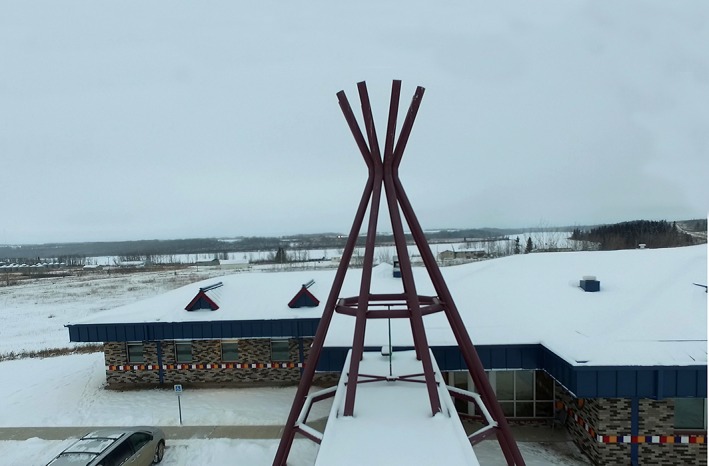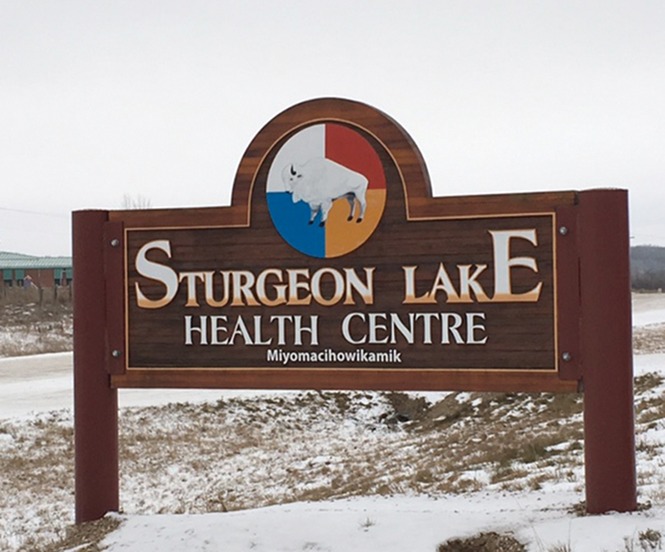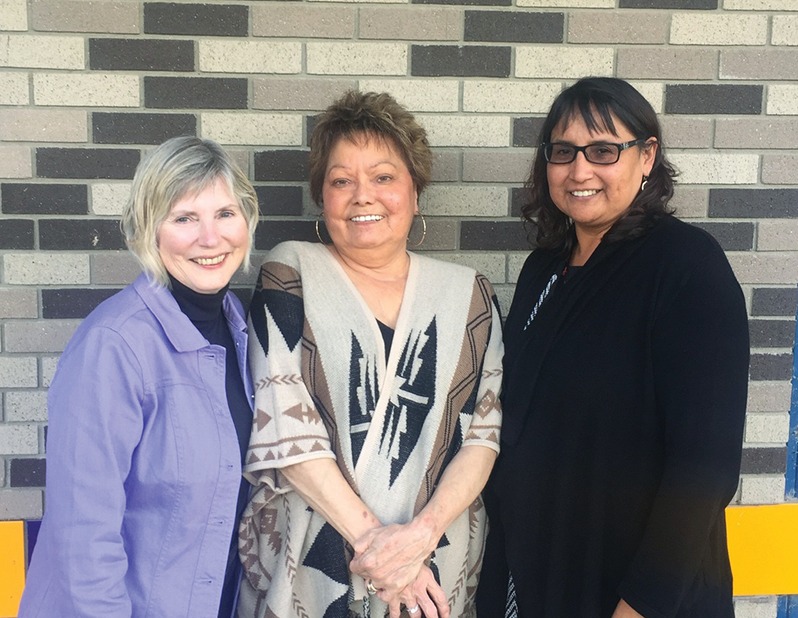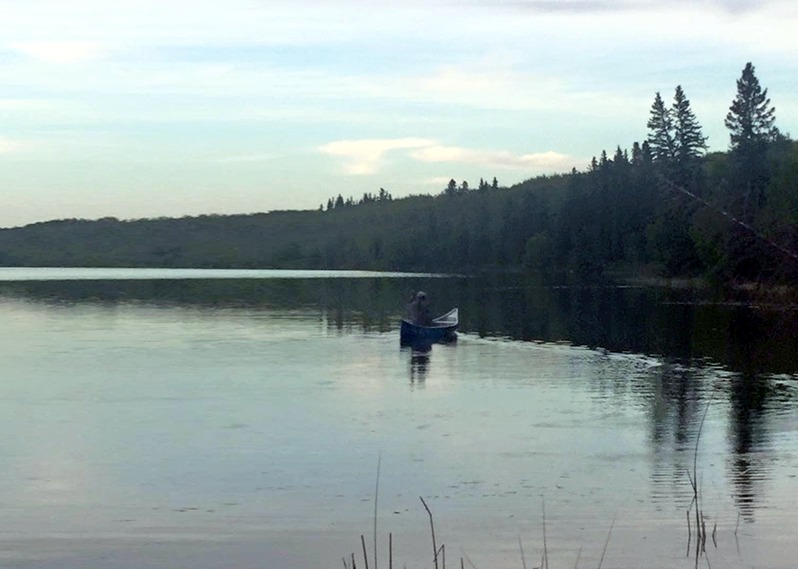More than half a decade in the making, the final report of Canada’s Truth and Reconciliation Commission was released in December last year. The full report is thousands of pages long, weighs more than 10 kg, and includes voices and stories about the effects of residential school told by more than 6000 First Nations, Inuit, and Metis peoples from coast to coast to coast.
The Truth and Reconciliation Commission also released 94 “calls to action,” the 22nd of which is that “those who can effect change within the Canadian health-system … recognize the value of Aboriginal healing practices and use them in the treatment of Aboriginal patients in collaboration with Aboriginal healers and Elders where requested by Aboriginal patients.”1
It’s a call to action that an extended team investing in the health and well-being of Sturgeon Lake First Nation in Saskatchewan, a team that includes Dr Vivian Ramsden, has been putting into action on a daily basis for years.
“About 7 or 8 years ago,” recalls Shirley Bighead, a former Band Councillor and the current Health Director who works with Vivian and who oversees the Health Centre at Sturgeon Lake First Nation, “we decided to start to look at traditional health, to make it a part of what was offered. We started to offer cultural camps, information sessions with elders, as well as protocols and ceremonies. Traditional health is a major part of what we offer to the community.”
Norma Rabbitskin, Senior Health Nurse, who works at the local health centre with Shirley Bighead, categorizes what is happening at Sturgeon Lake First Nation as “groundbreaking.”
“We really are trailblazing here,” states Rabbitskin. “It’s visionary what is happening here at Sturgeon Lake First Nation. Yes, there were and are challenges, but mostly with the integration of traditional healing and ceremonies into Western medicine. It is starting to happen now, though.”
All 3 women agree that part of the success in Sturgeon Lake comes from drawing on the words of elders who have been thinking and speaking for a long time about integrating different ways of knowing and being, different systems of knowledge.
Rabbitskin notes that elder Willie Ermine “has been saying for a long time now that people in health must understand the culture and worldview of the people they serve.”
Dr Vivian Ramsden, a participatory health researcher with the University of Saskatchewan’s College of Medicine whose passion lies in primary health care, health promotion, and cross-cultural learning, likes to situate understandings about innovative practices unfolding with Sturgeon Lake First Nation within broader national health care paradigms.
“We have for too long [in Canada] had helicopter health researchers,” asserts Ramsden. “[Health] researchers did not develop long-term relationships with communities. As researchers and practitioners, we have to build on strengths. Strengths that have always existed. We have to stop using a ‘sick’ model and instead really understand that people are engaged in looking after their own health. We have to engage the communities we work with. It’s all about being in and with the people. It’s about community-driven strategies that enhance the health and well-being of the people.”
Both Rabbitskin and Bighead are pretty clear about the wants of the people residing at Sturgeon Lake First Nation.
The 2 women have huge heartfelt laughs that they engage right alongside searing assessments of a medical system they don’t think has ever done enough for indigenous peoples in Canada. “Too often the medical system is out to apply disease models, especially on our communities,” observes Rabbitskin. “We need people to look at wellness models. We need professionals who will use holistic models.”
“Physicians are doing a good job with physical health,” acknowledges Rabbitskin. “But for this community, they need to apply a holistic model, which includes mental health, emotional health, and spiritual health. The idea that our illnesses can be solved with prescriptions or a diagnosis comes from a single worldview. A pill doesn’t have spirit.”
Shirley Bighead agrees. And tells a personal story to illustrate her belief. “Years ago my father-in-law was crippled with chronic rheumatoid arthritis. He was so debilitated, using a wheelchair. He had such pain. Then he went to a traditional healer and was transformed. I saw it with my own eyes. The 2 systems need to work together.”
Ramsden offers another concrete case for a cross-cultural health system that celebrates indigenous ways of knowing and being. “Tobacco is viewed by the medical system as a modifiable risk factor. It’s not viewed that way in indigenous communities. By working with traditional knowledge about tobacco, as opposed to just insisting that the use of tobacco is always wrong, Sturgeon Lake First Nation has been able to celebrate the fact that about 50% of their homes are smoke-free. Fifty percent! This protects children and older adults living in those homes from a variety of health concerns such as asthma and heart disease.”
So transformative was the Green Light Program, with Sturgeon Lake First Nation as a partner, that the results have been published in a peer-reviewed journal2 and as a chapter in a peer-reviewed book.3
In other words, the kind of research Ramsden is doing is research that mirrors the community-focused and indigenous-conscious calls for new medical and health practices made by Bighead and Rabbitskin and other community members at Sturgeon Lake First Nation. It is ultimately also exactly the kind of research the health and medical communities are increasingly interested in. The kind of research that acknowledges multiple ways of understanding the world we all live in.
“We need,” according to Ramsden, “to make residents and researchers more aware of mixed methods. Prevention is too often not funded even though, especially in community, it changes outcomes. In this community, we work with family physicians and other health care providers, encouraging them to take the best of both worlds. It should always be a choice for First Nations.”
Shirley Bighead adds to Ramsden’s words, the 2 women somehow seamlessly weaving into each others’ stories: “We have residents in our community who are now looking at diabetes treatment using traditional perspectives. Every year we host 4 to 6 nursing students in our community. We know working here changes their worldview. Everyone has a very positive experience. At Sturgeon Lake First Nation, we are doing our part to orient and change people’s vision about the way First Nations want to be valued and treated. Medicine is a ceremony. It is a prayer to the Creator. That’s where healing comes from.”
“We have to go back to a place where we all care for each other,” summarizes Norma Rabbitskin. “We are dealing with intergenerational trauma in our communities. You can’t pinpoint that with an ICD code. Instead, we have to all relearn who we are, as a human race, respecting each other, loving each other, not fighting between indigenous and non-indigenous worlds. It is a sacred teaching to respect all life. I think we are coming around to that at Sturgeon Lake First Nation. We might have lost our way, but we are finding our way back. All of us.”

Aerial view of the health centre at Sturgeon Lake First Nation (photo courtesy of Sturgeon Lake Health Centre library).


PHOTO LEFT: Miyomacihowikamik, Sturgeon Lake Health Centre (photo taken by Norma Rabbitskin). PHOTO RIGHT: Vivian Ramsden, Shirley Bighead, and Norma Rabbitskin work with the elders on traditional healing and other issues facing the community (photo taken by Tanya Felix).

PHOTO: A peaceful day fishing on Sturgeon Lake (photo courtesy of Sturgeon Lake Health Centre library).
Footnotes
La traduction en français de cet article se trouve à www.cfp.ca dans la table des matières du numéro de janvier 2017 à la page e70.
Ms Bighead is a member of the Sturgeon Lake First Nation in Saskatchewan and Health Director at the Sturgeon Lake Health Centre. Her focus is on improving the health of the community, which led to Sturgeon Lake First Nation being a “health transferred” community. In addition, she has been very supportive of and engaged with the Green Light Program by modeling stopping the use of nontraditional tobacco in the early days of the program. Ms Rabbitskin is a fluent Cree speaker from Big River First Nation in Saskatchewan and is currently Senior Health Nurse for Sturgeon Lake First Nation. Her passion is assisting and being of service in developing community-based programs that are strongly grounded in the healing value of re-engaging in traditional healing practices, parenting skills, and acquiring traditional life-skills teachings from elders and knowledge keepers while maintaining the vitality of language in knowledge building and achieving wellness. Dr Ramsden is a registered nurse, Professor and Director of the Research Division in the Department of Family Medicine at the University of Saskatchewan, and an honorary member of the College of Family Physicians of Canada. She is a passionate advocate for participatory health research and patient-oriented research; thus, her research interests are in participatory health research, primary health care, and prevention and management of chronic diseases.
The Cover Project The Faces of Family Medicine project has evolved from individual faces of family medicine in Canada to portraits of physicians and communities across the country grappling with some of the inequities and challenges pervading society. It is our hope that over time this collection of covers and stories will help us to enhance our relationships with our patients in our own communities.
References
- 1.Truth and Reconciliation Commission of Canada: calls to action. Winnipeg, MB: Truth and Reconciliation Commission of Canada; 2012. [Google Scholar]
- 2.Ramsden VR, McKay S, Bighead S, Boucher G, Bourassa C, Butt P, et al. Participatory health research. Celebrating smoke-free homes. Can Fam Physician. 2013;59:1014–5. [PMC free article] [PubMed] [Google Scholar]
- 3.Ramsden V, Mckay S, Bighead S, Boucher G, Bourassa C, Butt P, et al. Engaging with the community to enhance primary care. In: Rauch F, Schuster A, Stern T, Pribila M, Townsend A, editors. Promoting change through action research. Rotterdam, The Netherlands: Sense Publishers; 2014. [Google Scholar]


